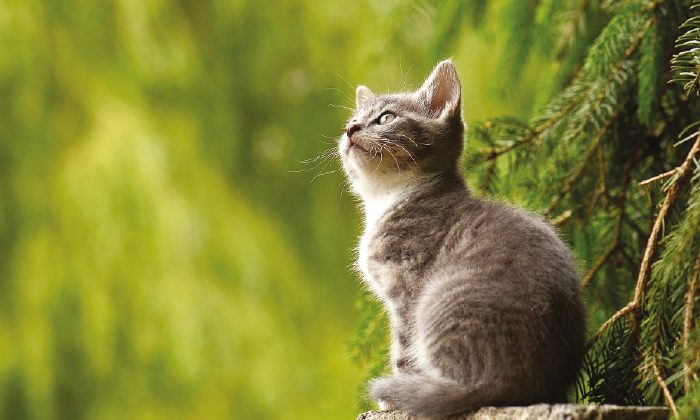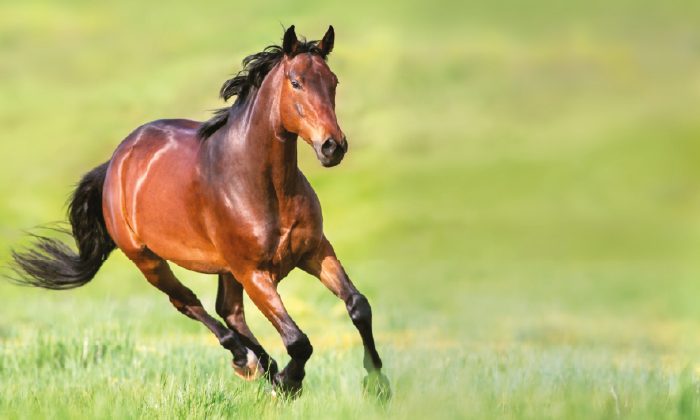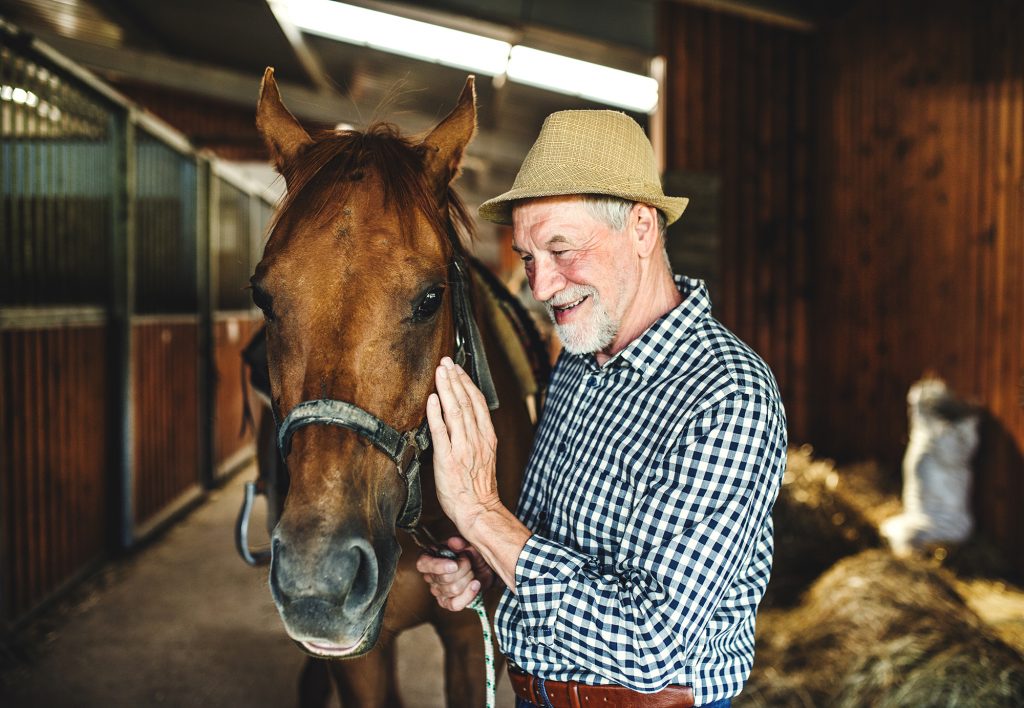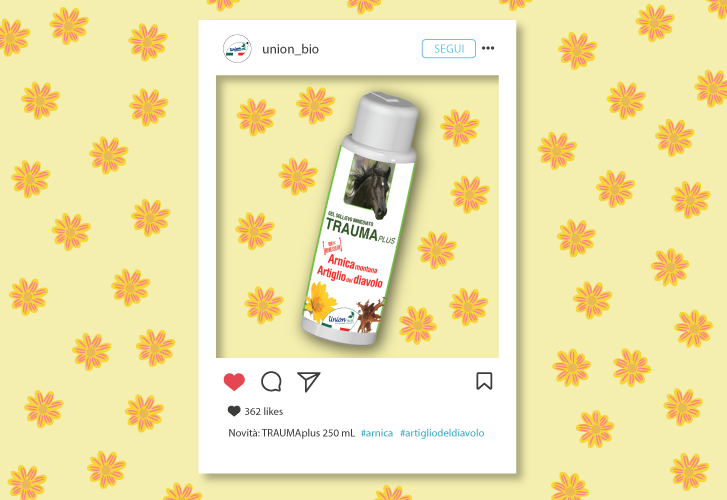The syndrome from gastric ulcer in horses it is a disease that is much more widespread today than one might think. The greater diagnostic frequency of this disease is made possible by the use also in the field of fiber optic gastroscopes. This pathology is characterized by an injury to the internal tissue of the stomach ditto Mucosa.
A FEW HINTS ABOUT DISEASE
The syndrome, commonly called "Horse gastritis”, Has a multifactorial etiology. The most frequent causes are certainly the type of diet, the management of the stable, the type of life, the stress, race factors, as well as the use / abuse of anti-inflammatory drugs. In a physiological situation there is a balance of the protective and aggressive factors of the mucous membrane, which guarantees the maintenance ofgastric homeostasiswhen, instead, external factors take over, such as those mentioned above, the situation can change and become pathological.
The greatest incidence occurs in thoroughbred horses, in which this syndrome affects about 80% of individuals, or in any case in all sports horses subjected to competitions, about 70% are affected. Among the main causes, as mentioned, also the type of management of the stables.
In fact, the horse is a herbivorous animal monogastrico which has undergone changes in its habits over the years. The horse in the wild lives in packs and spends most of its time, around 16 h per day, grazing grass. Today, however, the horse is forced to live very often in fixed housing, without having the possibility of using the paddock, but above all it is fed three times a day. This is certainly the most important forcing in causing the syndrome gastric ulcer. The horse has one stomach very small structured so as to produce an amount of acid, approximately 30 liters per day, such as to be able to digest small quantities of food at a time, but continuously. During the hours of forced fasting the production of gastric juices remains constant and is associated with the absence of saliva, with a buffering effect, and hay, which causes these juices to attack the gastric mucosa with a corrosive action that in the long run can lead to a gastritis, simple inflammation of the mucous membrane, or worse at ulceration of the same, with the presence of more or less extensive erosions of the mucosa. So it is necessary that the horse is always fed with reduced but frequent meals, so that saliva and fodder absorb the continuously secreted acid.
STOMACH ANATOMY
The horse's stomach is divided into two regions separated by a band called The margin Plicate.
The highest region, called fondo, is represented by the non-glandular portion of the stomach, about a third of it, where the plicate margin is less protected; the lower region, or the body, is called the glandular portion and covers the remaining part of the stomach, in which the mucosa is rich in glands secreting gastric juices but also enzymes, such as bicarbonate, capable of protecting the mucosa itself.
It is no wonder, therefore, that most of the lesions, about 80% of the cases, are found in the highest region close to the plicate margin. Exercise, in addition to all other factors, significantly increases the incidence of the disease since, during normal movement, the gastric contents tend to remain in the lower part of the stomach; when the work instead becomes intense, the abdominal mass presses on the diaphragm, and therefore on the stomach, causing the content to rise also in the non-glandular area of the stomach itself.
CLINICAL SIGNS
The disease can indifferently affect young foals or adult horses with mild to more serious clinical signs as in the case of deep ulcerations.
In foals it is generally noted:
- Diarrhea
- Reduced growth
- Poor appetite
- Bad “body condition score”
- Bruxism
- drooling
In adults, the following occur:
- Colic symptoms
- Low body condition score
- slimming
- lack of appetite
- Low performance
- Paco hair
- Refusal to work
- Nervousness
DIAGNOSTIC METHODS: gastroscopy and analyzes to be performed
The diagnosis par excellence is made through one gastroscopy which allows to evaluate the degree of disease and, consequently, to decide the right therapy. Other tests are represented by the search for occult blood in the feces (melena) and by blood tests where there is anemia and decrease in proteins.
With gastroscopy it is possible to detect different degrees of ulceration classified from the first degree, less severe, with a single lesion at the level of the glandular area, and then move on to subsequent degrees that go to indicate lesions affecting the plicate margin, up to the sixth and more severe case with multiple and conveying ulcers, large area interest, with bleeding and general resentment.
SOME THERAPEUTIC POSSIBILITIES
Depending on the severity of the injury, a different treatment can be chosen.
In severe cases, the election therapy is given by the use of Omeprazole which is able to block the proton pump and therefore inhibit the production of gastric juices.
In milder cases, antacids such as aluminum or magnesium suspensions can be used.
Other much cheaper drugs are represented by Ranitidine or Cimitidine, which block gastric secretion, and by Sucralfate, which instead has a mucoprotective action, however requiring repeated administrations every 6h.
On the market there are also natural treatments that manage to bring the gastric mucosa back to a normal condition, also acting on reducing the animal's stress.
PREVENTION IN ANIMALS
Given the multifactoriality of the pathology, various measures can be performed in order to lower the risk of incidence:
- Distribute the food in small quantities several times a day or even leave the forage at will
- Leave the horse as free as possible in the paddocks
- Supplement with alfalfa fodder rich in natural antacids such as calcium, saponins, mucilage and magnesium sulphate
- Do not abuse in the use of concentrated feed
- Always associate a gastroprotector if the use of anti-inflammatories is necessary
- Use complementary feed or specific supplements, in order to guarantee the maintenance of gastric homeostasis during periods of more intense training and during transport trips, preventing the appearance of the disease itself
Dr. Alessandra Palomba
Veterinarian
CTS Union BIO approved
AN ALL NATURAL COMPLEMENTARY FEED!
Union BIO, an Italian company specialized in the formulation and production of natural products for animals, the result of scientific research, recommends the use of pHiloGastro, complementary feed containing extracts of officinal plants capable of strengthening the protective film of the gastric mucosa, alleviating burning and stimulating and modulating the animal's immune system.

This complementary feed, the efficacy of which was studied at the Faculty of Veterinary Medicine of the University of Pisa, has given excellent results in reducing the symptoms of Gastric Ulcer Syndrome, as well as in improving and healing the gastric mucosa already affected by multiple lesions. shallower (short article publication).
Photo: Flavio Spugna, Silvia Tondu, Irene May.





















